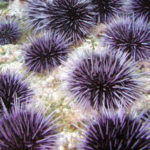Are sea otters endangered ?
 Sea otters today are considered a species that is endangered. People actively hunted for the sea otters’ wool in the 18th century, which meant destructive influence for the species, and sea otters began to occur less frequently and less frequently in the natural habitat. It is estimated that today there are less than 2,000 representatives left in the wild.
Sea otters today are considered a species that is endangered. People actively hunted for the sea otters’ wool in the 18th century, which meant destructive influence for the species, and sea otters began to occur less frequently and less frequently in the natural habitat. It is estimated that today there are less than 2,000 representatives left in the wild.
There are three different species of sea otter, which today are recognized as a science. The central sea otter (also known as the Asian sea otter) is the largest of the subspecies and is found around islands in the western Pacific. The southern sea otter (also known as the California sea otter) is located off the coast of California and is known to have a narrow head and small teeth. The northern sea otter is native to the territories of Alaska and the northwest of the Pacific Ocean. The northern sea otter was destroyed from the coast of British Columbia due to more active hunting, but was recently returned to the island of Vancouver.
Unlike other marine mammals, the sea otter does not have a layer of fat to keep it warm, so it should rely on dense fur to protect itself from the cold. The sea otter’s fur is so thick that no water actually touches the sea otter skin. The sea otter fur also consists of two layers, a waterproof layer of long protective hair with a layer of short thick fur under it.
Sea otters are known to mate all year round. After a gestation period of up to a year gives birth to a single calf, but there are reports that often these animals are born and twins. It is known that uterine sea otters feed their puppies for up to one year, and by this time the puppies can hunt and feed themselves.



























